Plant Selection is Decided by You. Plant Positioning is Decided by the Sun.
It's time for the plant selection and positioning step. This is the last step in the garden planning process. By now, your vegetable garden is ready for planting. All that's left to do - decide which types of vegetables you want to grow. You also need to determine where, in your garden, you will grow each plant.
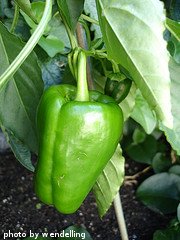
Plant selection is decided by you. Make a list of vegetables you are interested in growing in your garden. Choose the ones you and your family like to eat the most. Once you've created this list, rank the vegetables from most favorite to least favorite. Then determine the space requirements required for each vegetable plant. You can find this info by clicking on the individual vegetable types listed on the navigation bar of our
Home page.
Compare the space requirements of each plant to the size of your own garden. Take a piece of paper and sketch out your garden. Try to make the dimensions as close to scale as you can. Add the vegetable plants you've decided to grow to your sketch, drawing them to scale as well. Remember to take into account space between rows and space between individual plants.
**(Always remember, if your garden is on a slope, plant in rows going up and down the slope, not parallel to the slope, for best results. Additionally, it's usually better to plant in many shorter rows rather than a few long rows. Example: If your garden is 10ft x 50ft, it's better to plant 25 rows that are 10 ft long and 2 ft apart as opposed to 5 rows that are 50 ft long and 2 ft apart)**
Your sketch might look something like this...
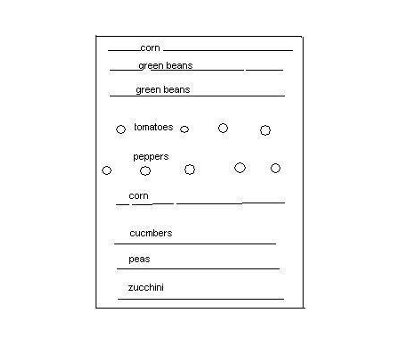
Once you've completed the plant selection process and added them to your sketch, you can move on to plant positioning.
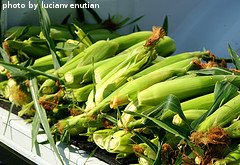
Where in your garden should you grow each plant? Remember, plant selection is determined by you. Plant position is decided by the sun. Why? Plants vary in height. Sweet corn can reach 7 feet tall. Tomato plants might reach 6 feet tall. Peppers - 3 feet tall. Green beans - 2 feet tall. Cucumber plants don't grow up, they grow out along the ground. So what's the point? Remember that when fully grown, one type of vegetable plant might create shade in a particular part of the garden. You wouldn't want to plant green beans in between tomatoes and corn, because the green beans might not get enough direct sunlight. Look at your sketch. If you did your research correctly, you have room to fit all of those plants in your garden. Now draw a second sketch of your garden with no plants listed (basically just draw a rectangle or square, depending on the shape of your garden). Again, try to make the sketch to scale. Look at the list of vegetables in the first sketch. Rank the vegetables in order of height. Remember, you can find this info by clicking on the individual vegetable types listed on the navigation bar of our Home page. Now, pick one end of the garden in your sketch and add the tallest plant you want to grow. Then add the next tallest and so on until you garden sketch is filled in completely. (Here's an example. Notice how the second sketch contains the same vegetables as the first sketch, just in different locations).
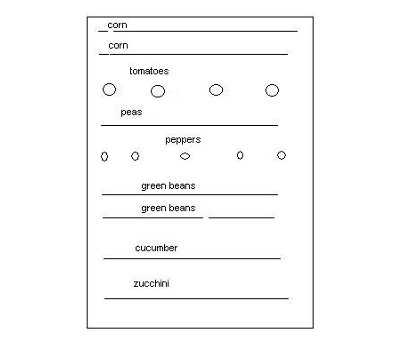
Congratulations! You've completed the plant selection and positioning step of the garden planning process.
You now have your vegetable garden blueprint. You can take this sketch out to your garden and start dividing it up into rows.
Get some wooden stakes and string together (heavy sticks, kite string, etc., also work just fine). Put a stake into the ground at each end of the garden where you want a row of plants to be (refer to your blueprint). Tie the string to the two stakes. The string marks where your row of plants will go. Continue staking out every row or area of your garden according to your blueprint.
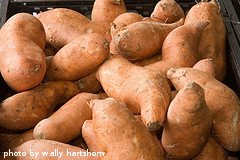
When finished, write down your list of vegetables on small, separate pieces of paper (one vegetable name on each piece of paper). Place each piece of paper in a clear, plastic bag and staple the bag to the corresponding stake so that the vegetable name is clearly visible.
Your garden planning process is now complete. Now for the fun part - planting your vegetables.
Click here to leave our Plant Selection page and return to the main Garden Planning page
Click here to go to our Home page and learn how to grow different kinds of vegetables
Create, Prep and Plan Quick Links
Creating Garden From Scratch
Soil Preparation
Plant Selection and Position
Container Garden Planning
Container Plant List
Garden Planning Main Page
Home Page